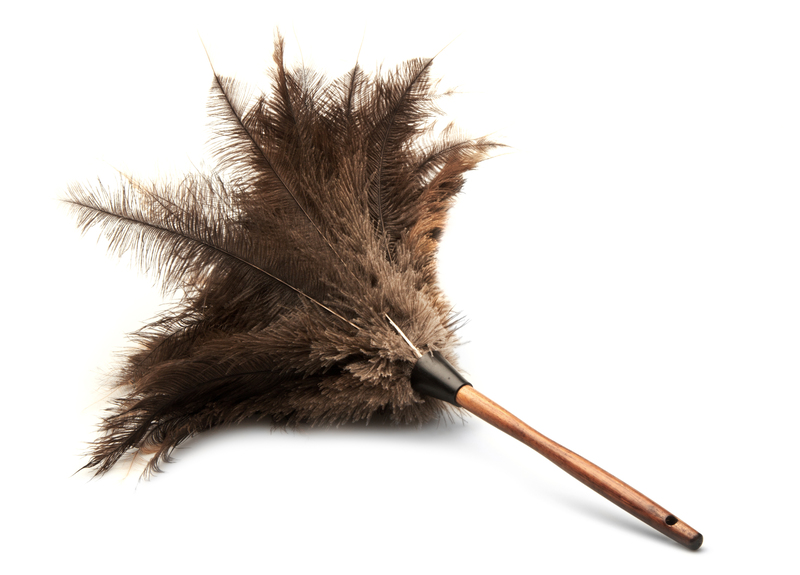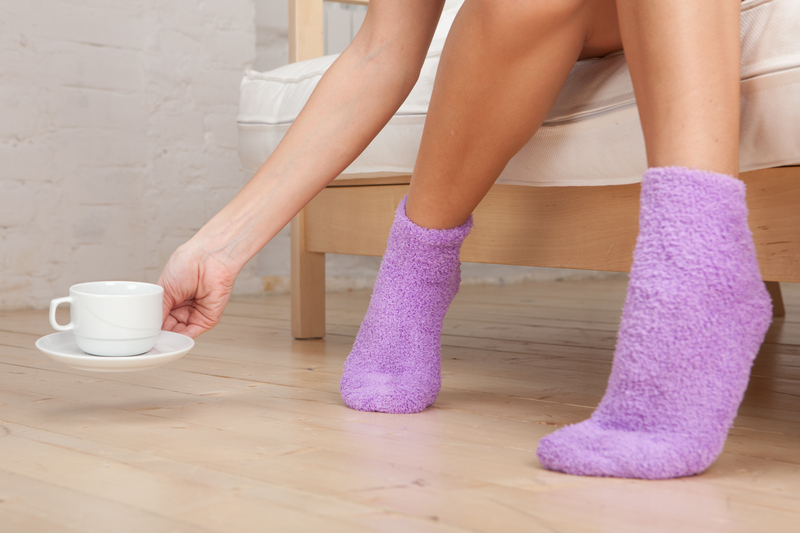Tailored to Last: Proper Sofa Cover Washing Revealed
Posted on 09/09/2025
Tailored to Last: Proper Sofa Cover Washing Revealed
The living room is the heart of any home, and at its core, the sofa provides comfort, style, and a welcoming feel. But after a few months--or weeks if kids or pets are involved--sofa covers can quickly lose their luster. Getting them clean, however, isn't as simple as tossing them in the washer and hitting start. Proper sofa cover washing can dramatically extend the life and beauty of your beloved furniture. In this guide, you'll learn expert tips, actionable techniques, and essential best practices on how to keep your sofa covers looking tailored to last.

Why Is Proper Sofa Cover Cleaning Critical?
Sofa covers serve as both a functional and aesthetic safeguard for your upholstery. Here's why cleaning them correctly matters:
- Longevity: Routine, proper washing prevents fabric breakdown and color fading, helping sofa covers last for years.
- Allergen Reduction: Clean covers help minimize dust, pet dander, and allergens in your home.
- Odor Control: Regular maintenance eliminates offensive odors caused by spills, sweat, or pets.
- Presentation: Crisp, clean covers keep your living space fresh and inviting for guests and family alike.
Decoding the Care Label: Your First Step
Before washing any sofa cover, always consult the care label. This seemingly small tag is your sofa's lifeline. Ignoring its guidance risks fabric damage, color bleeding, or shrinkage. Look for these codes:
- W - Use water-based detergents; safe for machine or hand washing.
- S - Use solvent-based cleaners; avoid water to prevent fabric damage.
- WS - Water- or solvent-based cleaners allowed.
- X - Vacuum only; professional cleaning required.
If your sofa covers are removable and machine-washable, proceed with care. If not, professional cleaning or spot cleaning might be your only options.
How Often Should You Wash Sofa Covers?
Many homeowners wonder about the ideal sofa cover washing frequency. The answer depends on use and environment:
- General Household: Wash covers every 3-6 months.
- Homes with Pets or Kids: Every 1-2 months..
- High-Allergen Environments: Every month, or spot clean regularly between washes.
Between washes, regular vacuuming and quick spot treatments help prolong the need for major cleaning.
Preparing Your Sofa Covers for Washing
- Vacuum Thoroughly: Remove hair, debris, and fine dust to avoid depositing it in the machine.
- Inspect for Stains: Pre-treat visible stains with a suitable stain remover (test on an inconspicuous area first).
- Zip and Button Up: Fasten all zippers and buttons to prevent snagging or distortion.
- Read the Label Again: Double-check fabric type and temperature instructions.
Step-by-Step Guide: How to Wash Sofa Covers Properly
1. Remove the Covers Carefully
Take your time removing each piece, avoiding forced tugs, which can rip seams or stretch the fabric.
2. Choose the Right Cleaning Method
- Machine Washing: Most cotton, microfiber, and poly-blend covers can be machine washed. Select a gentle cycle and cold or lukewarm water.
- Hand Washing: For delicate or wool-blend slipcovers, hand wash in a tub using mild detergent.
- Dry Cleaning: Fabrics labeled 'S' or 'Dry Clean Only' require solvent cleaning by professionals.
3. Select Appropriate Detergents
- Use mild, color-safe detergents free of bleach or harsh chemicals. These preserve color and softness.
- For sensitive skin or allergies, opt for fragrance-free or hypoallergenic detergents.
4. Wash with Care
- Wash covers inside out to reduce fading and abrasion.
- Don't overload the washing machine; launder separately or in small loads to allow free movement.
- Keep water cool (max 30?C / 86?F) to prevent shrinking.
5. Drying Done Right
- Air drying is best: Lay covers flat on a clean, dry towel or drape them over a clothesline. Avoid direct sunlight unless the care tag recommends it, as UV rays can fade colors.
- Tumble Drying: If allowed, use the lowest heat setting and remove the covers while still slightly damp to prevent wrinkles and shrinking.
- Never put covers back on the sofa while wet--this can trap moisture inside cushions and promote mildew.
6. Ironing and Reassembling
- Iron on low heat if necessary, and only if the care label recommends it.
- Refit covers while slightly damp: This can help them mold back to the sofa's shape without loose wrinkles.
Pro Tips for Spot Cleaning Your Sofa Covers
Spills and stains can happen any time. Rapid response is the key:
- Blot, don't rub, to avoid pushing the stain further into fibers.
- Use a specialized upholstery cleaner or a mixture of mild dish soap and water for protein-based stains (milk, blood, eggs).
- Test any cleaning solution on a hidden area first.
- Rinse with clean water and blot dry. Avoid over-wetting as this can cause watermark rings.
Frequently Asked Questions About Washing Sofa Covers
Can all sofa covers be machine washed?
No. Always check the care label. Machine washing is suitable for most polyester, cotton, and microfiber covers, but not for leather, suede, silk, or some wool blends, which may require professional cleaning.
What's the best way to prevent fading and shrinkage?
- Wash in cold water
- Use gentle programs
- Choose air drying when possible
- Turn covers inside out before washing
What about heavily soiled or odor-prone covers?
Pretreat with an upholstery-specific enzyme cleaner before washing. Consider an extra rinse cycle to ensure all detergent is removed, minimizing the risk of residue or lingering odor.
Common Mistakes When Washing Sofa Covers
Even the best intentions can go awry. Here are classic pitfalls to avoid:
- Ignoring the Care Label: This can lead to permanent fabric damage.
- Using Hot Water: Hot cycles can cause shrinkage and fade dyes, especially in cotton and linen blends.
- Skipping Stain Pre-Treatment: Stains might set in permanently if not addressed before full washing.
- Overloading the Washer: Crowding covers reduces cleaning effectiveness and causes tangling or uneven wear.
- Drying on High Heat: Covers could emerge a size too small, or with set-in creases that are hard to remove.
Choosing Cleaning Products: What Experts Recommend
- Go for detergents marked 'for delicates' and avoid those with added bleach or fabric softeners.
- For brightening whites (cotton/linen), add a half cup of baking soda to your wash in place of bleach.
- Natural fibers (e.g., linen) benefit from gentle, pH-neutral powder detergents.
- If using spot sprays, select fabric-safe, colorfast formulas--never standard carpet stain removers.
Alternative Cleaning Methods for Non-Removable Covers
Not all sofas are made with removable covers. In these cases, regular spot cleaning and careful vacuuming keep your upholstery fresh between professional cleanings:
- Weekly vacuuming: Use an upholstery attachment to remove crumbs, pet hair, and fine dust.
- DIY steam cleaning: Small handheld fabric steamers loosen dirt and kill germs without soaking fibers.
- Spot cleaning: Use a spritz of water-mild soap solution and a clean microfiber cloth for stains; always dab, never scrub hard.
How to Extend the Life of Your Sofa Covers
Want your sofa covers tailored to last years without fraying or losing color? Here are bonus tips:
- Rotate and interchange multiple sets to reduce friction and fading on any single set.
- Protect from direct sunlight if possible by repositioning furniture or using throw blankets in high-exposure areas.
- Invest in high-quality slipcovers with reinforced stitching for added durability.
- Store spare covers in a dust-free, dry area when not in use to keep them fresh.
Eco-Friendly Sofa Cover Washing Tips
- Wash with full loads when possible to save water and energy.
- Use cold water settings for reduced energy use and fabric preservation.
- Opt for plant-based detergents and avoid fragranced or chemical-heavy products.
- Air dry whenever possible to lower your carbon footprint.

When to Call a Professional for Sofa Cover Cleaning
DIY isn't always best. Consider professional cleaning services if:
- Fabric is marked 'S' or 'Dry Clean Only'.
- Covers have deep-set stains that home methods won't lift.
- Your covers are delicate, vintage, or embroidered, risking distortion or color bleed in regular washing.
A professional's experience and specialized tools ensure your sofa covers always look tailored to last.
Final Thoughts: How Proper Sofa Cover Washing Preserves Comfort and Value
Learning the art of tailored sofa cover cleaning is more than just a routine chore. It's about protecting your investment, ensuring a healthier home environment, and keeping your living room inviting and beautiful. Follow these actionable steps--know your fabrics, follow label directions, use gentle products, and handle with care--and your couch covers will stay pristine, vibrant, and truly tailored to last.
Ready to give your sofa a fresh, lasting look? Start with our guide, and experience the difference of proper, detailed cover care for every seat in your home.



